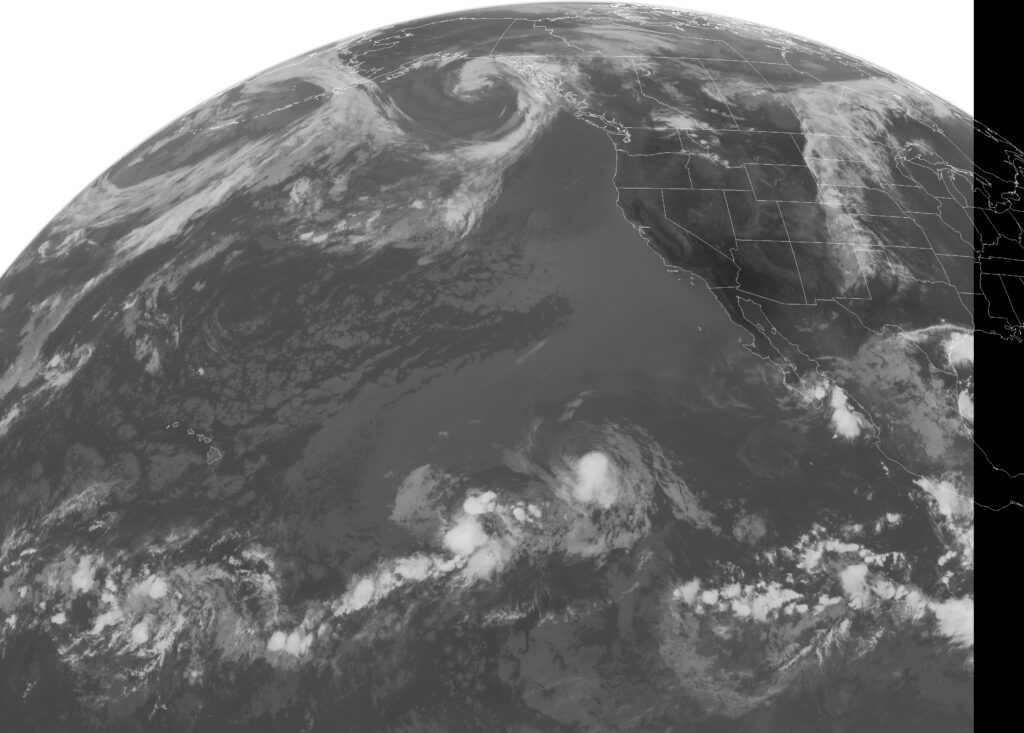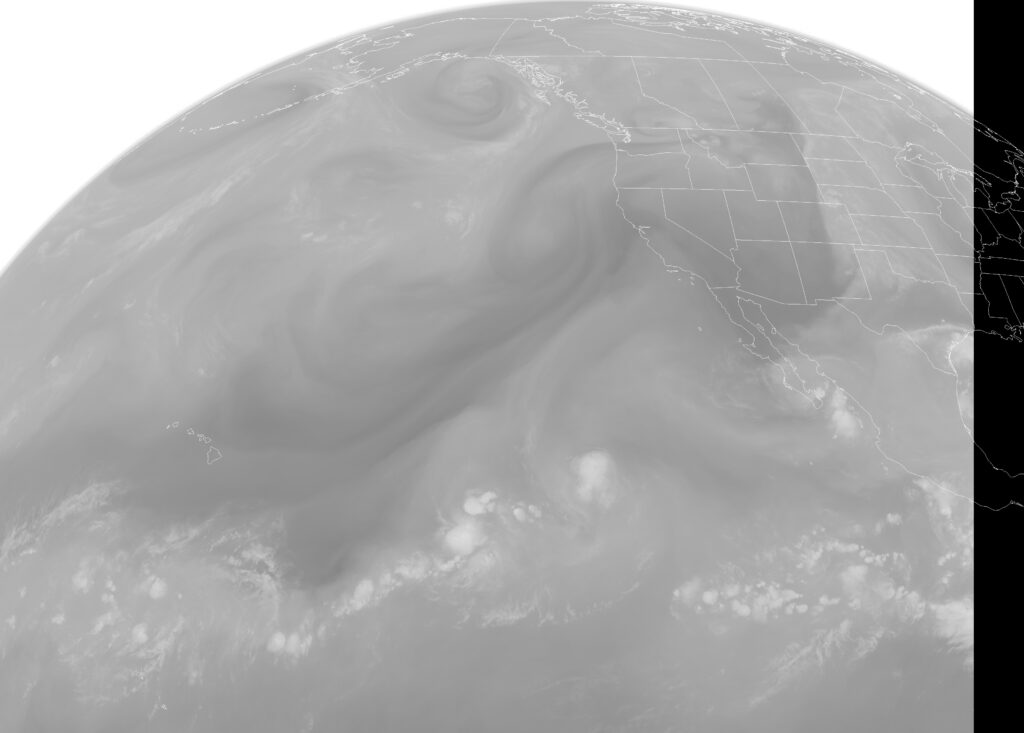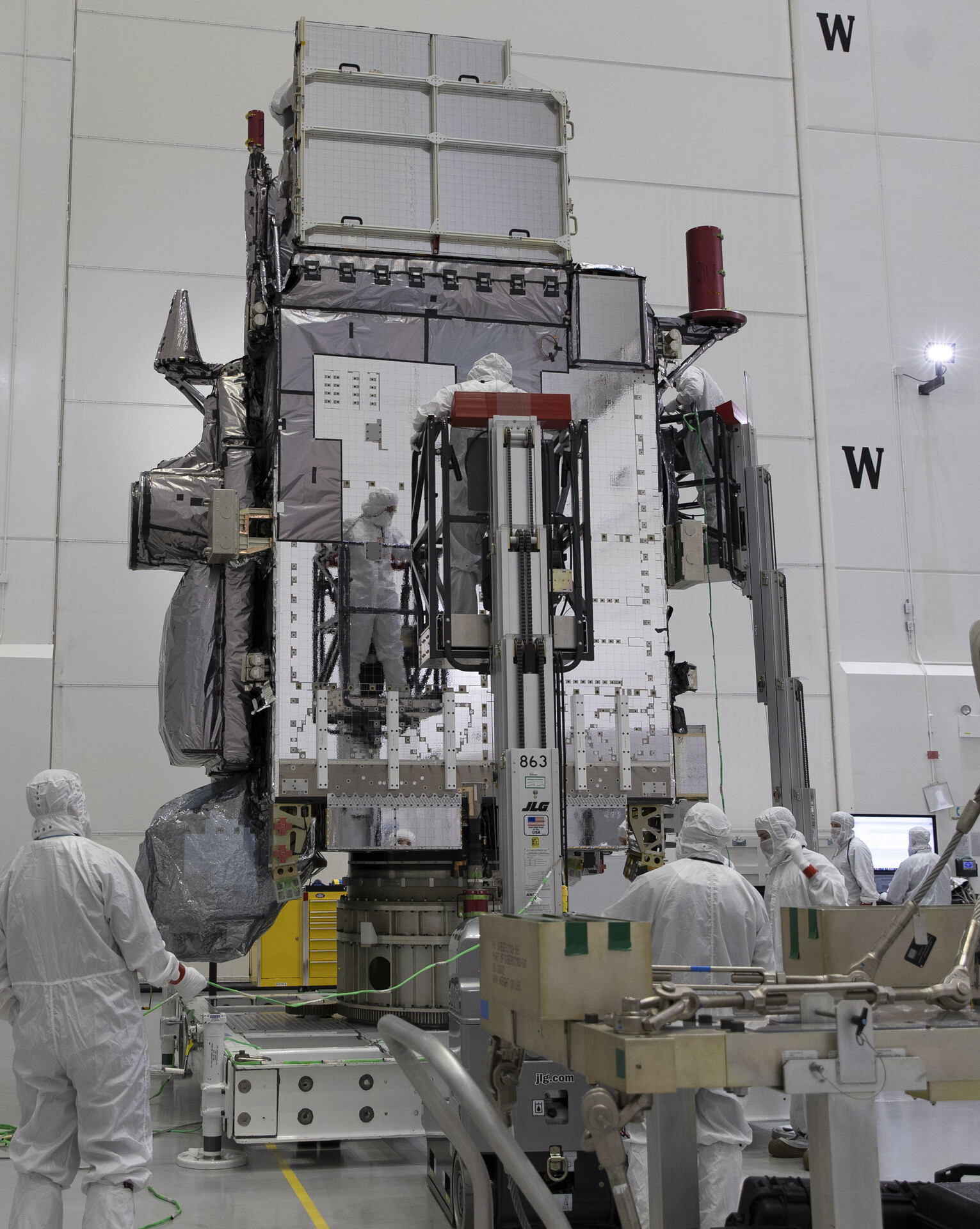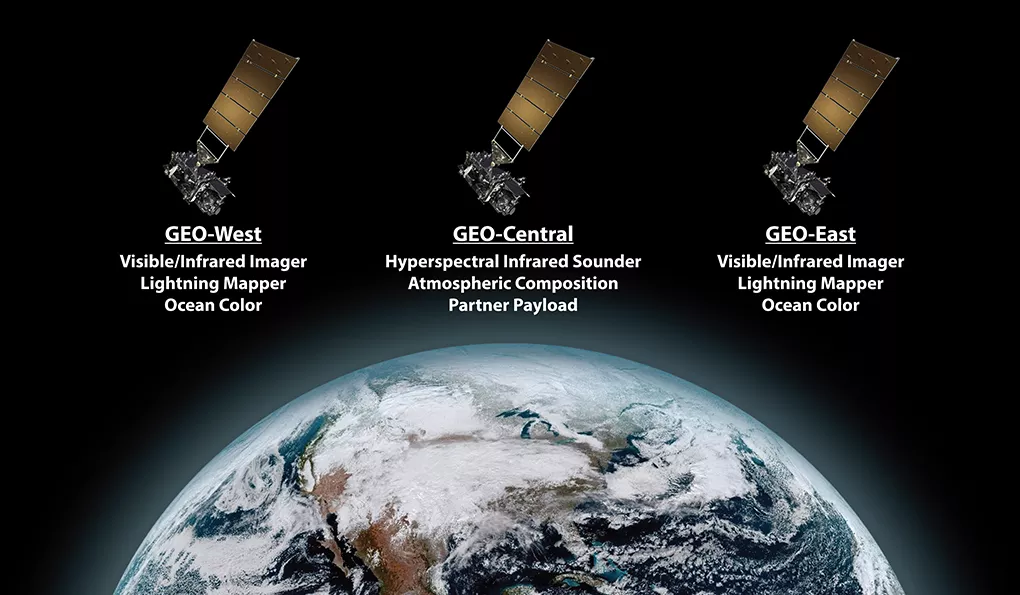![]()
GOES 15 reactivated for testing and backup coverage for GOES 17 during Hurricane and Cyclone season.
GOES 15 was launched atop a Delta IV-M+(4,2) rocket flying from Space Launch Complex 37B at the Cape Canaveral Air Force Station. The launch occurred at 23:57 GMT on 4 March 2010, forty minutes into a sixty-minute launch window. Upon reaching geostationary orbit on 16 March, it was redesignated GOES 15. On December 6, 2011, it was activated as the GOES-West satellite, replacing GOES 11.
Power is supplied by a single gallium arsenide solar panel, which provides up to 2.3 kilowatts of power. A 24 cell nickel-hydrogen battery is used to provide power when the satellite is not in sunlight. Instruments aboard GOES15 include a five-channel multispectral imager to capture visible light and infrared images of the continental United States, a sounder to take readings of atmospheric temperature and moisture, a solar x-ray imager to detect solar flares, and instruments to monitor the magnetosphere, cosmic background radiation, and charged particles.
Eleven years into its 10 year designed lifespan, GOES has been in an ‘on-orbit storage mode’ since 2019, like its companion satellite GOES 14. And like a classic car or truck, every now and then you need to kick the tires and light the fires. and so it is with these satellites.
GOES 15 serves as a backup for GOES 17, and recently in July of 2021, GOES suffered a glitch in its memory, causing it to go into a fail-safe mode and selectively shut down for 22 hours. While engineers worked around the clock and got GOES 17 back in running condition, the previous issues with GOES 17 heat pipe anomaly, reared its ugly head, and G17 has a bit more degradation from the ABI imager.
GOES 15 (and 14) is scheduled to be reactivated from storage mode at least twice a year, typically in August and February, to help fill in and augment imagery during the peak of degradation with GOES 17.
This Year 2021, starting on July 29th, ground engineers started issuing commands to GOES 15, and slowly began to switch on systems and check them out, On Aug 2nd and 3rd, Goes began, hesitantly, transmitting via GVAR.
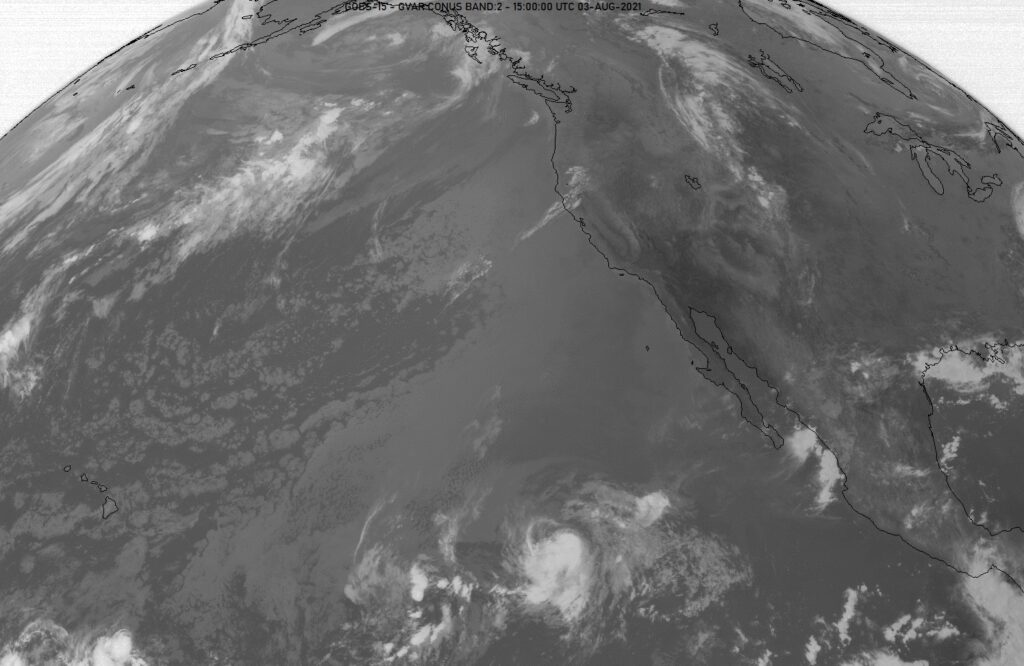
What does this mean for the satellite hobbyist? MORE IMAGERY!! Even though the GOES 15 Satellite is only “on” for a few weeks a year, it enables users with GVAR setups to check signal and operations, and for HRIT operators, it enables them to get relayed imagery from GOES 15 via GOES 17 on VCID 5 and VCID 6
